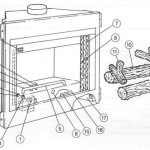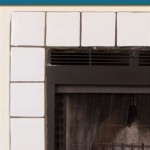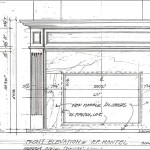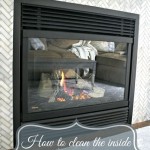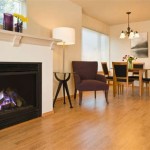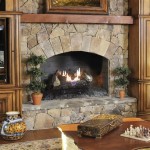Open Fireplace Tips for a Safe and Enjoyable Fire
An open fireplace can serve as a focal point in a home, providing warmth, ambiance, and a connection to traditional hearths. However, operating an open fireplace safely and efficiently requires knowledge and diligent practice. This article provides essential tips to help homeowners optimize the use of their open fireplaces, focusing on safety, fuel selection, maintenance, and maximizing heat output.
Ensuring Fireplace Safety
Safety is paramount when operating an open fireplace. Neglecting safety protocols can lead to property damage, personal injury, or even fatalities. Maintaining a clean chimney, understanding proper fire-starting techniques, and using appropriate safety equipment are all crucial components of safe fireplace operation.
Chimney Inspection and Cleaning: A clean chimney is essential for preventing chimney fires. Creosote, a flammable byproduct of burning wood, accumulates inside the chimney flue. Regular chimney inspections by a qualified professional are necessary to assess the level of creosote buildup. The National Fire Protection Association (NFPA) recommends annual inspections, and more frequent cleanings if the fireplace is used regularly. A professional chimney sweep can remove creosote using specialized brushes and vacuums, reducing the risk of a dangerous chimney fire. Ignoring this maintenance can result in a rapidly spreading fire within the chimney that can extend to the surrounding structure.
Fire-Starting Practices: Safe fire-starting begins with a well-prepared firebox. A traditional teepee or log cabin structure provides adequate airflow for efficient combustion. Avoid using flammable liquids such as gasoline or kerosene to start a fire. These substances can ignite explosively and cause serious injuries. Instead, use commercially available fire starters, dry kindling (such as twigs and small branches), and newspaper. Position the kindling under the logs to create a sustained flame that gradually ignites the larger pieces of wood. Never leave a fire unattended, especially during the initial stages of ignition.
Protective Equipment and Fire Suppression: A fireplace screen is an indispensable safety item. It prevents sparks and embers from escaping the firebox and potentially igniting nearby carpets, furniture, or other flammable materials. The screen should be sturdy and fit snugly against the fireplace opening. Keep a fire extinguisher readily accessible near the fireplace. Ensure that the extinguisher is rated for Class A fires, which involve ordinary combustibles such as wood and paper. A metal bucket filled with sand or dirt can also be used to smother small embers that may escape the firebox. Smoke detectors and carbon monoxide detectors should be installed and maintained throughout the home, providing early warning in the event of a fire or carbon monoxide leak.
Selecting the Right Fuel
The type of wood burned in an open fireplace significantly affects the fire's efficiency, smoke output, and the amount of creosote produced. Hardwoods are generally preferable to softwoods, and seasoned wood is always superior to green wood.
Hardwood vs. Softwood: Hardwoods, such as oak, maple, ash, and beech, are denser than softwoods and contain less resin. This density allows them to burn longer and produce more heat. Softwoods, such as pine, fir, and spruce, burn quickly and produce more smoke and creosote due to their higher resin content. While softwoods can be used for kindling, they are not recommended for prolonged burning in an open fireplace. Using softwoods regularly can lead to increased creosote buildup and a higher risk of chimney fires.
Seasoned vs. Green Wood: Seasoned wood has been dried for at least six months, ideally longer. This drying process reduces the moisture content of the wood, making it easier to ignite and burn cleanly. Green wood, on the other hand, contains a high moisture content, which requires more energy to burn off before the wood can ignite. This results in a smoky fire, reduced heat output, and increased creosote production. Seasoned wood should have a moisture content below 20%. This can be measured using a wood moisture meter, or visually assessed by checking for cracks at the ends of the logs and a dull, gray color.
Proper Wood Storage: Storing wood properly is essential for maintaining its dryness and preventing rot. Wood should be stacked off the ground on pallets or racks to allow for air circulation. Cover the top of the woodpile with a tarp to protect it from rain and snow, but leave the sides open to allow for ventilation. Avoid storing wood directly against the house, as this can attract pests and create a fire hazard. Properly stored wood will burn more efficiently and produce less smoke, contributing to a cleaner and more enjoyable fire.
Optimizing Fireplace Efficiency and Reducing Smoke
Open fireplaces are notoriously inefficient, with much of the heat escaping up the chimney. However, several techniques can be employed to improve efficiency and reduce smoke output, making the fireplace a more effective heating source.
Damper Management: The fireplace damper is a metal plate located in the chimney flue. It controls the airflow through the chimney and should be fully open when a fire is burning. However, when the fireplace is not in use, the damper should be closed to prevent heat from escaping the house. An improperly closed damper can allow significant heat loss during the heating season. Ensure the damper is in good working order and fits snugly to prevent air leakage. Consider installing a top-sealing damper, which seals the chimney from the top, providing a tighter seal and further reducing heat loss.
Fireplace Inserts and Grates: Fireplace inserts are enclosed stoves that fit inside an existing fireplace opening. They are significantly more efficient than open fireplaces, as they direct more heat into the room and reduce heat loss up the chimney. Fireplace grates elevate the logs off the fireplace floor, allowing for better airflow and more complete combustion. Choose a grate that is appropriately sized for the fireplace and made of durable materials, such as cast iron. These additions can significantly improve the heat output and efficiency of an open fireplace.
Air Supply and Draft Control: A proper air supply is essential for efficient combustion. Ensure that the room containing the fireplace has adequate ventilation. Opening a window slightly can provide additional air for the fire to draw on. However, excessive airflow can cause the fire to burn too quickly and produce more smoke. Some fireplaces have adjustable air intakes that can be used to control the draft and optimize combustion. Experiment with different settings to find the ideal balance between airflow and efficiency.
Smoke Shelf Cleaning: The smoke shelf, located just above the damper in the chimney, is a horizontal surface where debris and creosote can accumulate. This buildup can restrict airflow and cause smoke to back up into the room. Periodically cleaning the smoke shelf with a brush and vacuum can help maintain proper draft and prevent smoke problems. This task is often best performed by a professional chimney sweep during a routine inspection.
Understanding the Fire Triangle: Fire requires three elements to exist: heat, fuel, and oxygen. Understanding this "fire triangle" is critical for both starting and controlling a fire in an open fireplace. Managing any one of these elements can influence the fire's behavior. For instance, using seasoned wood reduces the need for excessive heat to evaporate moisture. Ensuring adequate airflow provides sufficient oxygen for complete combustion. Starving the fire of oxygen, such as by covering it with sand, can extinguish it. By understanding fire's basic principles, users can achieve a safer and more controlled fireplace experience.
Minimizing Environmental Impact: While an open fireplace can provide warmth and ambiance, they also contribute to air pollution. Reducing the amount of smoke produced by the fire not only improves indoor air quality but also minimizes the environmental impact. Burning seasoned wood, using efficient fire-starting techniques, and maintaining a clean chimney all contribute to a cleaner and more sustainable fireplace experience. Consider using alternative fuels, such as manufactured logs made from compressed sawdust, which burn more cleanly than traditional wood.
Addressing Common Fireplace Problems: Smoke backing up into the room is a common problem with open fireplaces. Several factors can contribute to this issue, including a dirty chimney, a closed or partially closed damper, inadequate air supply, or a downdraft caused by external wind conditions. Addressing these issues one by one can often resolve the problem. Cleaning the chimney, ensuring the damper is fully open, providing adequate ventilation, and installing a chimney cap to prevent downdrafts are all potential solutions.
Child and Pet Safety: Open fireplaces pose a significant safety risk to children and pets. The open flames and hot surfaces can cause serious burns. Never leave children or pets unattended near a lit fireplace. Install a sturdy fireplace screen that completely covers the opening and prevents access to the fire. Teach children about the dangers of fire and the importance of staying away from the fireplace. Consider using a safety gate to create a barrier around the fireplace, preventing children and pets from getting too close.

Fireplace Safety Tips From The American Academy Of Pediatrics Children S Medical Group

How To Open Up A Fireplace Direct Fireplaces

10 Tips To Improve The Chimney Draft Of Open Fireplace

Fireplace Safety Make Sure The One You Want Doesn T Start Another Tips Advice Jump Realty Inc Real Estate Windsor Essex County Homes For
How To Start A Fireplace Fire 2 Safe And Easy Methods

Safety First Tips For Fireplace At Home Stoves

Have A Safe Home Fireplace From Handyman Connection

How To Open Up A Fireplace Direct Fireplaces

7 Safety Tips When Lighting A Fire In Fireplace Dwesr
.aspx?strip=all)
How To Buy A Fireplace 6 Tips Regency
Related Posts

